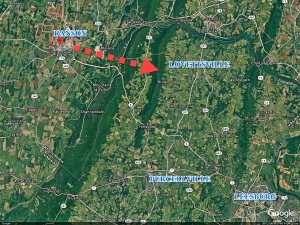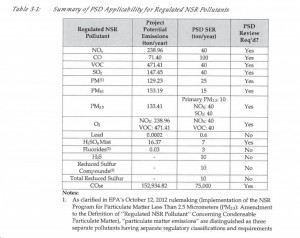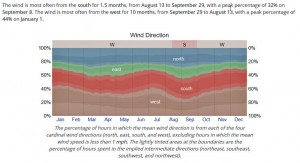Citizens and public officials from Virginia and Maryland are concerned about an 150-million-dollar 135-acre WV insulation manufacturing plant in Ranson that may hurl pollutants up two 200-foot high smokestacks that will fall upon the citizens of West Virginia but also Virginia and Maryland as well.
The citizens of Ranson, WV, where the factory is to be located, following a June 2018 ground-breaking, are up in arms protesting what this could mean to the health and wellbeing of their children attending nearby schools and daycare facilities.
The plant is scheduled to run 24/7, and is located directly across Route 9 from North Jefferson Elementary School, and within 10,000 feet of T.A. Lowery Elementary, Jefferson High School and Wildwood Middle School. These four schools have about 2,744 students. Parents are talking about removing their children from school and moving.
Chris Tandy, a spokesperson for 350.org in Loudoun, said, “There’s enough potential for dangerous pollutants to come out of that West Virginia factory and to be carried by the wind current to Loudoun that we should all be very concerned about harm to ourselves and to our agriculture, wineries and breweries.”
Nor do we have to guess what those pollutants are because they are itemized in an “Air Impact Assessment” submitted by Rockwool, also called Roxul, that has been widely circulated and, some think, should have been enough to slam the door on this questionable development project.
“When you look at Roxul’s own Air Impact Assessment,” Chris said, “you’ll see potential for hundreds of tons of VOCs [Volatile Organic Compounds], Particulates, Sulphur Dioxide, and Nitrogen Oxide, and that should worry all of us.”
One of the VOCs is formaldehyde, a neurotoxin that damages memory, concentration, behavior, and physical dexterity in children.
Hazardous fine particulate matter (PM 2.5) is pollution that, when inhaled, penetrates deep into the lungs.
An engineering review by the Sierra Club states that Rockwool “fuels and raw materials are known to contain numerous hazardous air pollutants, such as mercury, arsenic, cadmium, and chromium.”
The full chart included in that Air Impact Assessment is as follows:
Several observers, who did not want to be identified, mentioned that a fair question is, how could this have happened without requiring an environmental impact statement for the effect on Maryland and Virginia, and not just whatever West Virginia required?
It does not appear to be a hypothetical question, that the winds could move these pollutants from West Virginia to points East into Maryland and Virginia, when you consider that, according to weather charts, the wind is from the West for ten months of the year.
The Plant, Rockwool, manufactures stone wool insulation. They have been in the United States since 2017 and this is their second plant.
When the plant operates, if it does finally go online, the haze and fog may reach nearby Harper’s Ferry. Tourist industry has weighed in with their concerns. There will be 100 tractor-trailers off the plants loading docks, no doubt making their way back and forth across Route 9.
Whatever pollution is carried up those smokestack into the air and wind, will find its way into the Shenandoah and Potomac Rivers that are a water source downstream for Maryland and Virginia.
Thus, the challenges to West Virginia and the region more generally, to be followed by much more protest, both by the public and officials, with hearings before diverse governmental bodies and, no doubt, court cases.




Jefferson County WV, Loudoun County VA, and Montgomery County MD have prosperous agricultural economies. The SO2, NOx, ground ozone and volatile organic compounds (VOCs) from Rockwool have known and well documented toxic effects on grapes, soybeans, wheat, corn, melons, berries, fruit trees, flowers and many other cash crops on which we depend. See: https://extension.umd.edu/learn/air-pollution-effects-vegetables for more information. Additionally, though much less is known about the effects on animals, studies suggest exposure to particulate matter and volatile organic compounds can impact performance in horses and reproduction and mortality in dairy cattle and sheep.